
New York’s art scene gets some West Coast love this evening as Nicole J. Georges and “Sister Spit” descend upon our sleepy little town.
The quartet sprang from the mind of San Francisco-based author and literary curator Michelle Tea, who last year piled some pals into a van and toured the States to spread their poetic gospel.
“Some pals” may be a bit dismissive, especially considering the quartet’s all-star, all-lesbianic line-up. In addition to Tea, Sister Spit consists of author and short filmmaker Tara Jensen, author Rihannon Argo and the aforementioned Ms. Georges, a zinemaker and artist who specializes in furry, somewhat disquieting creatures.
Georges and the gals reunite in NYC tonight for a one-off reunion and, in celebration of the event, Queerty correspondent Megan Metzger chatted with the pet portraitist about touring with the Sisters, why we should remember ‘zines, picking her beastly subjects and the difference between East Coast and West Coast artists.
Megan Metzger: What was it like to tour cross country by van for Sister Spit? Was it just like being in a band?
How about we take this to the next level?
Our newsletter is like a refreshing cocktail (or mocktail) of LGBTQ+ entertainment and pop culture, served up with a side of eye-candy.
Nicole Georges: It was like being in a band, but it was more luxurious because we got to sleep in hotels instead of friends’ floors. We were like a pack. A pack of dogs. A pack of dykes. We read the Jon Benet crime story out loud, listened to books on tape. It was the most fun I’ve ever had. In a van, you learn things about people. Michelle Tea can read for like seven hours out loud. These are not the kind of things you learn about people until you’re on tour.
MM: As a young misunderstood youth in Kansas City, I poured over Hitman, a ‘zine you made as a teen growing up punk in Johnson County, Kansas, a very decidedly unpunk place. In our increasingly electronic, paperless society, do you lament the inevitable death of the ‘zine, or is it just a challenge to keep it relevant?
NG: For me, a paper ‘zine is something tangible that has personality and life. It’s something alive to which you have an attachment. You don’t get that from a blog or an e-zine. Blogs have a special niche. When I’m working in front of a computer on art or whatever, it feels like I’m sucking the life out of [the art]. In Portland, we have the Portland Zine Symposium which I helped start. And there’s ‘Zine Frenzy, which is kind of a community art space moved toward self-publishing.
MM: Portland is such a grassroots, community-driven progressive kind of place, with a decidedly different energy than cold and dirty New York. Do you think this reflects how people make art in Northern Pacific as compared to NYC?
NG: This is from a total outsider prospective from someone who’s never lived in New York, but people here seem a lot busier, and it makes sense that if you’re really busy that your creative outlet would be something that takes less time to do.
In Portland, expenses are lower, people have more time to volunteer and West Coast people are naturally more laid back. Portland is a very relaxing place for privileged sub-culture kids interested in grassroots media and stuff. It’s very conducive with organizing or doing whatever project you want, and people are moving there all the time. There’s such a mass exodus so there’s always people excited to do new things.

MM: Hey, Nicole? Just what are “homorobics?” Can you describe some moves that make ‘em differ from regular-old aerobics?
NG: “Homorobics” is me and my friends Sugar Shapiro and Leslie Miller. Every week we have a class and it costs two to four dollars and we host it at the feminist book shop. We encourage people to wear whatever they want, which brings out a lot of nice ‘80s fashions and leg warmers. We’ll do jazzercise, Tae Bo, freedom sweatpant dance, yoga…
MM: Uh, freedom sweatpant dance?
NG: Yeah. It’s basically a free form move. “Pant-omime.” Sometimes we’ll cool down by pantomiming the entire plot of Titanic or a sax solo to Sade.
MM: Gotcha.
NG: We want to physically strengthen our community. The diet industry is a sick beast. It leaves a lot of us to hide in holes because we don’t want to preserve it at all, and so we atrophy and we lose touch with our bodies. We wanted to create a space that had nothing to do with weight loss. We wanted to offer another place for the community to put their money. Homorobics is not just for gay people. We’re straight-friendly, fat-friendly. We’re one-part pageantry, one-part politics, and the rest is just physical movement and exercise.
MM: I think New York could use some homorobics. By the way, I love your pet portraits. So sweet. Are there any animals you won’t draw?
NG: Good question. I can’t draw people I don’t like so I couldn’t draw animals I don’t like. Like pugs. No offense to pugs. But I drew my friend Danielle’s pug, Ruth, and I like Ruth. I’ve even drawn a naked mole rat, and some people don’t like them. Basically, I won’t draw people who are my enemies or a waste of my time. Like this girl who stole my girlfriend once, I drew her as a stick figure wearing a barrel with suspenders. ‘Cause that’s how I felt about her.
—–
You’ll have a chance to check out Georges’ comic life, both illustrated and otherwise, tonight at 10 along with Michelle Tea, Tara Jepsen and Rhiannon Argo at the Poetry Project at St. Marks Church (131 East 10th Street, www.poetryproject.com).

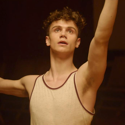





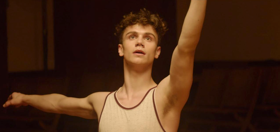
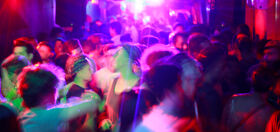
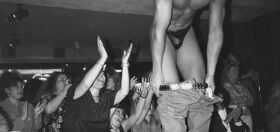


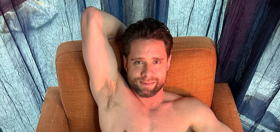



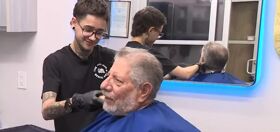


David Wayne Reed
“Homorobics=one-part pageantry, one-part politics, and the rest is just physical movement and exercise.”
I’ve never heard the entire gay experience so aptly summarized.
Love NG, Love MM.
mulletkitty
I love nicole j georges and saw her on tour last year! Thanks for covering them, Queerty. Keep it up: more sister spit, less celebutards.
Lissette Barros
The only lesbian artist you NEED to know about is ME, Lissette Barros, “Your favorite Lesbian Artist”!